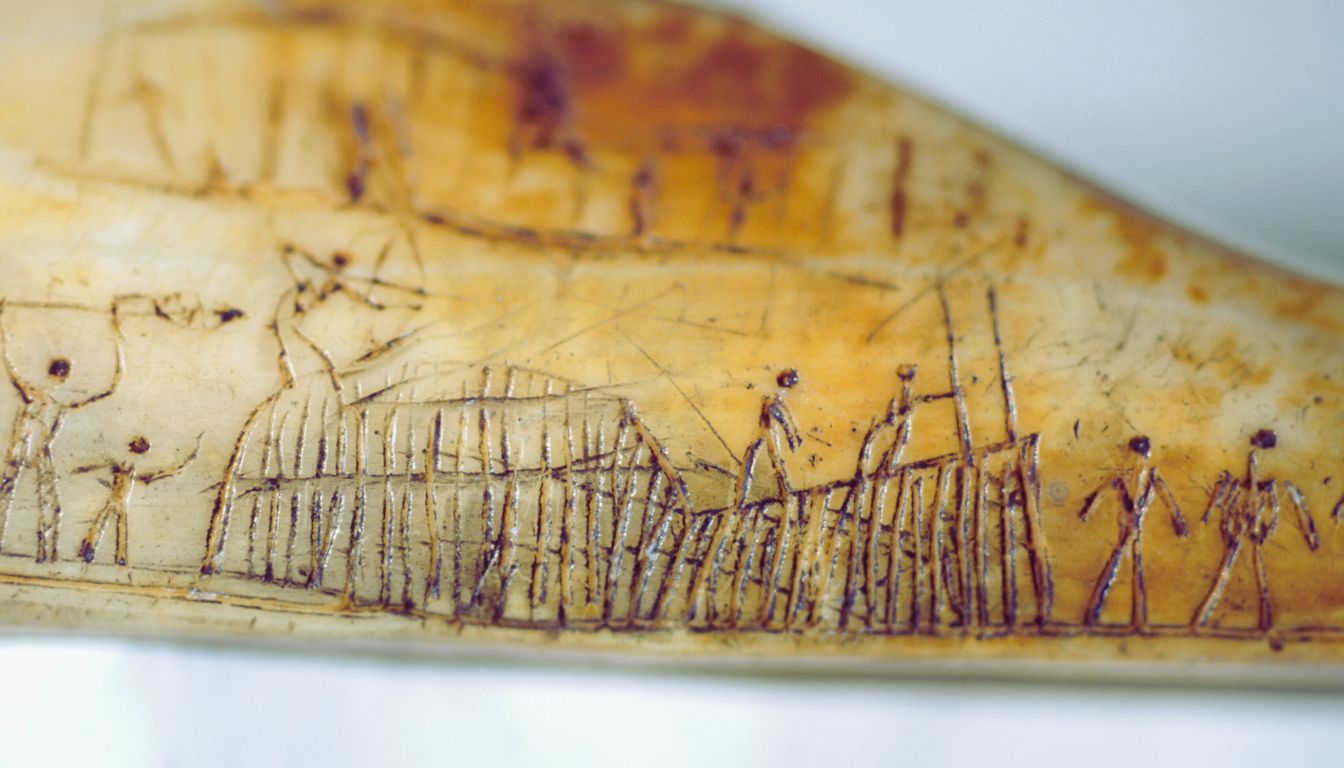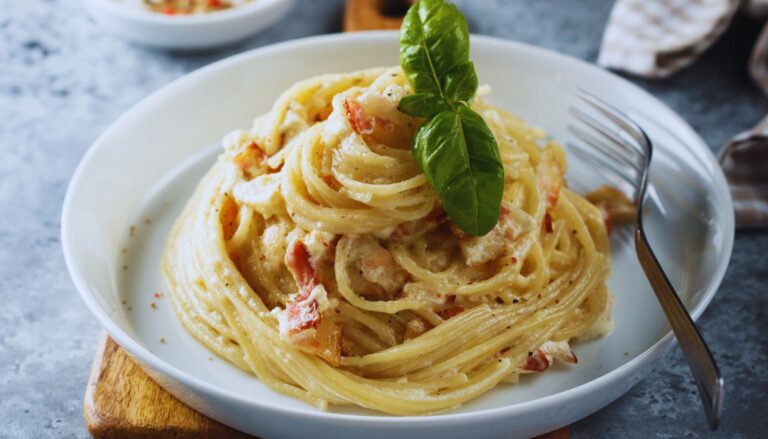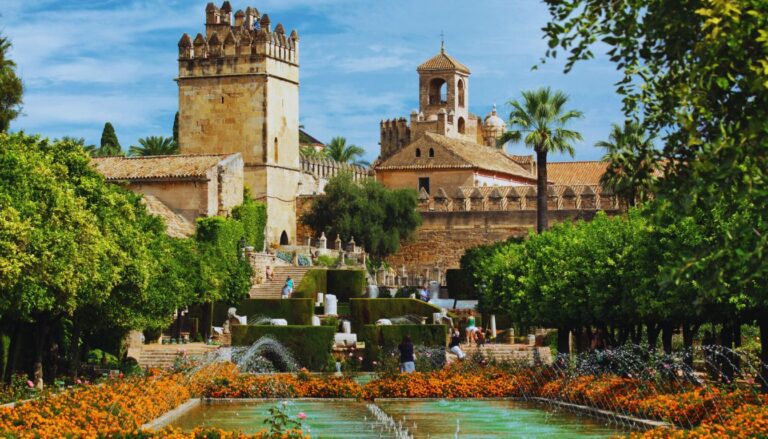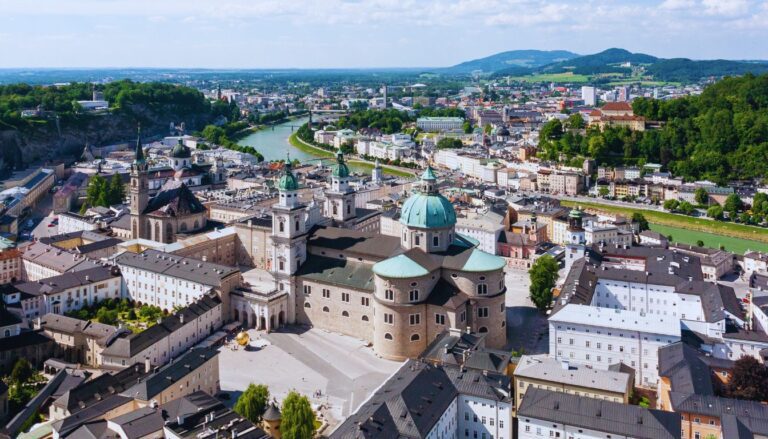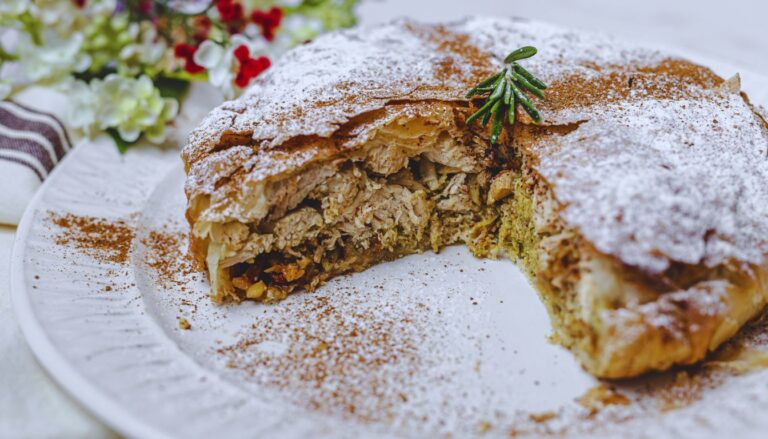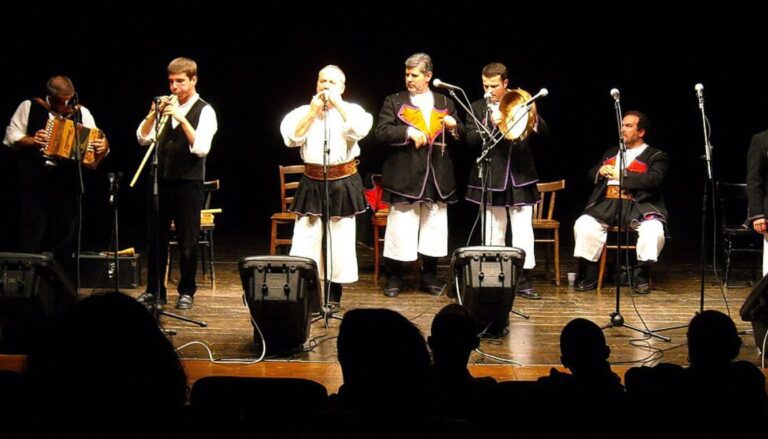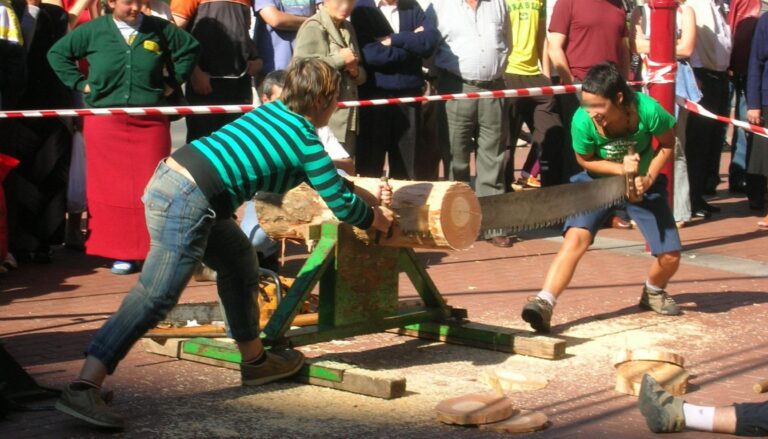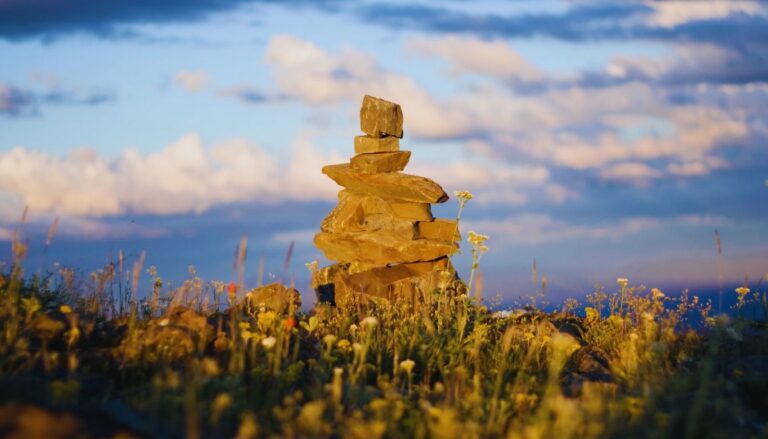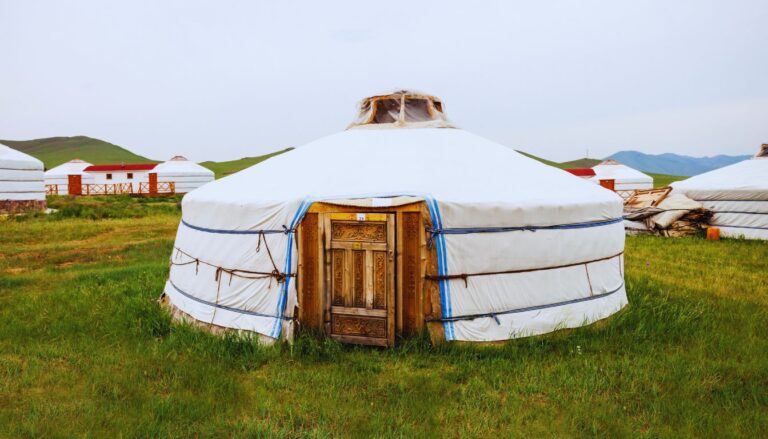Imagine holding a small, smooth stone figure in your hand. As you turn it over, you see the graceful curves of a seal, its body twisted as if diving into icy waters. This is Inuit art – a window into a world of ice, resilience, and ancient wisdom.
Inuit art is more than just beautiful objects. It’s a way for the Inuit people to share their culture, stories, and connection to the Arctic land. From ancient carvings made for spiritual purposes to modern paintings that speak about climate change, Inuit art has a rich history and an exciting future.
In this article, we’ll explore the world of Inuit art. We’ll learn about its origins, discover different types of Inuit artwork, and meet some of the artists who are keeping this tradition alive today. Whether you’re an art lover, a history buff, or just curious about different cultures, there’s something fascinating to discover in the world of Inuit art. So, let’s begin our journey into the creative spirit of the Arctic!
Table of Contents
The Origins of Inuit Art
The story of Inuit art begins thousands of years ago, in the harsh but beautiful landscape of the Arctic. For centuries, the Inuit (which means “the people” in Inuktitut) created art not for display in galleries, but as part of their daily lives.
Early Inuit art was mostly functional. They carved hunting tools, like harpoon heads, from materials like bone, ivory, and stone. These weren’t just practical items – the Inuit often decorated them with intricate designs of animals or geometric patterns. They also made small figurines called “tupilaks,” which were believed to have spiritual powers.
Inuit clothing was another form of art. Women would sew intricate designs into parkas and boots, using materials like sealskin and caribou hide. These weren’t just for looks – the designs often told stories or had special meanings.
Storytelling was (and still is) a crucial part of Inuit culture. Many early art pieces were used to illustrate stories about their beliefs, history, and daily life. For example, small carved figures might be used to act out legends as they were told.
When European explorers and whalers started coming to the Arctic in the 16th and 17th centuries, they were fascinated by Inuit crafts. They began trading for small carvings and decorated items, which the Inuit would make specifically for trade. This was the beginning of Inuit art as we know it today.
A big change came in the 1940s and 1950s. The traditional Inuit way of life was changing rapidly, and many Inuit were settling in permanent communities. At the same time, people in southern Canada and around the world were becoming more interested in Inuit art.
James Houston, a Canadian artist who traveled to the Arctic, played a key role in this change. He encouraged Inuit artists to make carvings and prints for sale in the south. This led to the creation of the first Inuit art co-operatives, which helped artists sell their work.
From these beginnings, Inuit art has grown into a respected and valued form of artistic expression. It has evolved from purely functional items to a wide range of artistic forms, including sculpture, printmaking, drawing, and more. But even as it changes, Inuit art remains deeply connected to the land, culture, and stories of the Inuit people.
Traditional Inuit Sculpture: Soapstone Carvings
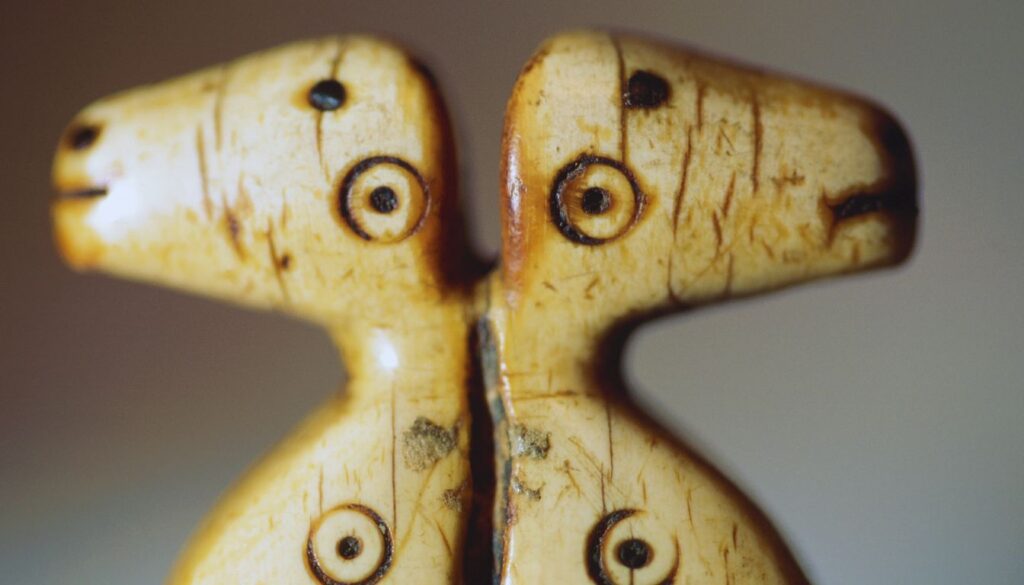
When most people think of Inuit art, they often picture smooth, stone carvings of animals or people. These sculptures, often made from soapstone, are indeed one of the most famous forms of Inuit art. Let’s explore how these beautiful objects are made and what they mean.
Soapstone, also known as steatite, is a soft rock that’s easy to carve but becomes hard and durable when polished. It’s found in many parts of the Arctic, often in shades of grey or green. The Inuit have used soapstone for thousands of years to make oil lamps (called qulliqs) and cooking pots.
Here’s how an Inuit artist might create a soapstone carving:
- First, they choose a piece of stone. They look for a stone without cracks that’s the right size for their idea.
- They might sketch their design on the stone with a pencil.
- Using files and rasps (rough tools for scraping), they start to shape the stone.
- As the general shape emerges, they use smaller tools like knives or dental tools for details.
- Finally, they sand the carving to make it smooth and shiny.
The whole process can take anywhere from a few hours to several weeks, depending on the size and complexity of the carving.
Inuit sculptors carve all sorts of subjects, but some of the most common are:
- Arctic animals like polar bears, seals, and whales
- People engaged in traditional activities like hunting or fishing
- Mythological creatures from Inuit legends
- Scenes from daily life in the Arctic
While soapstone is the most famous material, Inuit sculptors also use other materials found in the Arctic:
- Whale bone and antler: These are harder than soapstone and can be carved into more delicate shapes.
- Ivory: From walrus tusks or fossilized mammoth ivory. (Note: There are now strict rules about using ivory to protect animals.)
- Serpentine: A harder stone that can be polished to a high shine.
Each material has its own challenges and possibilities, and skilled artists know how to work with the unique properties of each one.
Inuit sculpture isn’t just about creating pretty objects. Each piece often tells a story or conveys an important aspect of Inuit life and beliefs. For example, a carving of a hunter and a seal might represent the importance of the hunt in Inuit culture. A transformation piece showing a human turning into an animal might illustrate an Inuit legend or spiritual belief.
Over time, Inuit sculpture styles have evolved. Early carvings were often small and simple, designed to be easily transported and sold. As the art form grew in popularity, artists began creating larger, more complex pieces. Today, some Inuit sculptors create abstract or conceptual works that blend traditional themes with modern artistic ideas.
Inuit sculpture is more than just a souvenir or decorative object. Each piece is a unique work of art that carries with it the skill of the artist, the stories of Inuit culture, and the spirit of the Arctic land. Whether it’s a tiny seal that fits in your palm or a large, intricate scene, each Inuit carving is a small piece of the Arctic, shaped by talented hands and rich tradition.
The Rise of Inuit Printmaking
While sculpture might be the first thing that comes to mind when you think of Inuit art, printmaking has become an equally important and vibrant part of the Inuit artistic tradition. The story of Inuit printmaking is a fascinating tale of cultural exchange, innovation, and artistic expression.
Printmaking was introduced to Inuit communities in the 1950s, largely thanks to James Houston, the same artist who had helped promote Inuit sculpture. Houston had studied printmaking in Japan and saw potential for this art form in the North.
The first Inuit prints were created in 1957 in Cape Dorset (now called Kinngait), a community in what is now Nunavut. The artists used sealskin stencils and stone-cut relief printing. This involved carving an image into a smooth stone surface, applying ink to the stone, and then pressing paper onto it to transfer the image.
From these beginnings, Inuit printmaking quickly grew and evolved. Here are some of the main techniques used in Inuit printmaking:
- Stone-cut printing: This original technique is still widely used. Artists often like how the stone’s natural patterns become part of the print.
- Stencil: Artists cut designs into thin materials (originally sealskin, now often paper or plastic) and apply ink through the cut-out areas.
- Etching and engraving: These involve carving designs into metal plates, which are then inked and pressed onto paper.
- Lithography: This technique uses the principle that oil and water don’t mix. Artists draw on specially prepared stones or plates with greasy crayons, then apply water and oil-based ink to create prints.
Inuit prints are known for their bold designs, vibrant colors, and distinctive style. Common subjects include:
- Arctic animals and landscapes
- Scenes from traditional Inuit life
- Mythological figures and stories
- Abstract designs inspired by Inuit culture and the Arctic environment
One unique aspect of Inuit printmaking is the annual release of print collections. The most famous of these is the Cape Dorset (Kinngait) Annual Print Collection, which has been released every year since 1959. These collections are eagerly anticipated by art collectors around the world.
Some notable Inuit printmakers include:
- Kenojuak Ashevak: Her famous print “The Enchanted Owl” appeared on a Canadian postage stamp and is considered an iconic piece of Canadian art.
- Pitseolak Ashoona: Known for her drawings and prints depicting traditional Inuit life.
- Tim Pitsiulak: His work often combines traditional subjects with modern elements, like wildlife alongside snowmobiles or satellites.
Printmaking has had a significant impact on Inuit communities. It has provided economic opportunities, preserved cultural knowledge, and allowed artists to share their perspectives with a global audience. Unlike sculpture, which is one-of-a-kind, prints can be produced in multiple copies, making them more accessible to a wider range of collectors.
Today, Inuit printmaking continues to evolve. Artists are experimenting with new techniques, incorporating digital technology, and addressing contemporary issues in their work. Yet even as it changes, Inuit printmaking remains deeply rooted in the culture, stories, and landscape of the Arctic.
From its beginnings as an experiment in cultural exchange to its current status as a respected and collected art form, Inuit printmaking is a testament to the creativity, adaptability, and enduring cultural strength of Inuit artists.
Textiles and Clothing in Inuit Art
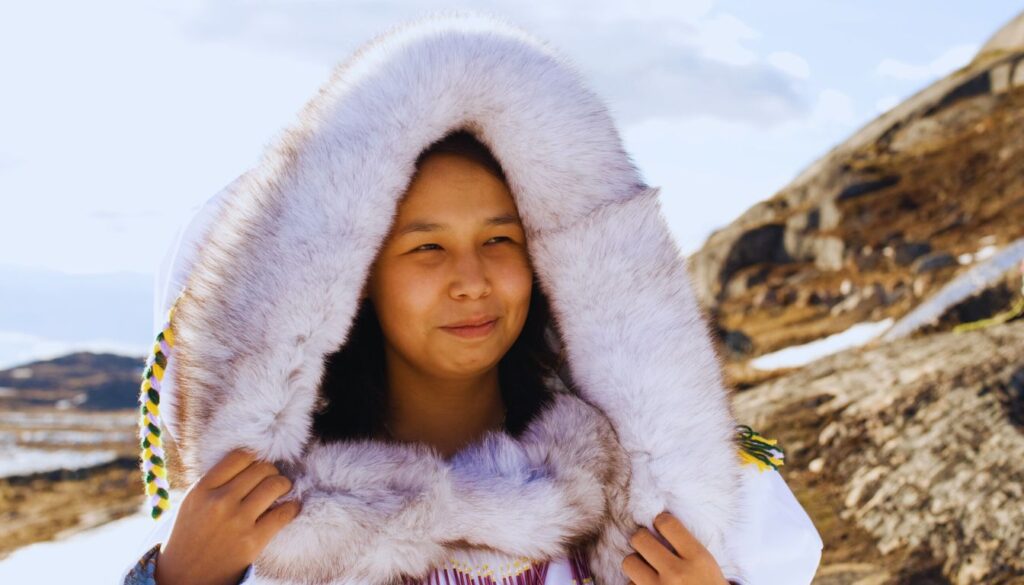
When we think of art, we often picture things hanging on walls or sitting on pedestals. But for the Inuit, some of their most beautiful and meaningful art has always been worn. Inuit clothing and textiles are not just functional items to keep warm in the harsh Arctic climate – they’re also important forms of artistic and cultural expression.
Traditionally, Inuit clothing was made from animal skins and furs, primarily sealskin, caribou hide, and polar bear fur. Women were (and often still are) the primary creators of clothing. The skills needed to prepare skins, design garments, and sew them together were passed down from mother to daughter over many generations.
Here are some key elements of traditional Inuit textile art:
- Skin Preparation: Preparing animal skins for use in clothing is an art in itself. It involves careful scraping, stretching, and sometimes chewing the skins to make them soft and pliable.
- Design: Inuit clothing designs are both practical and beautiful. For example, a parka (a thick, warm coat) might have a special shape to trap warm air, while also featuring decorative patterns.
- Sewing: Inuit women developed incredibly skilled sewing techniques, often using sinew (animal tendon) as thread. Their stitches had to be strong enough to keep out wind and water.
- Decoration: Many garments were decorated with intricate designs. Common techniques include:
- Appliqué: Attaching pieces of contrasting fur or skin to create patterns
- Embroidery: Using colorful threads to create designs
- Beadwork: Sewing tiny beads onto clothing in decorative patterns
Some important traditional Inuit garments include:
- Amauti: A women’s parka with a large hood and pouch for carrying a baby
- Kamik: Waterproof boots made from sealskin
- Pualuk: Mittens, often decorated with intricate designs
The designs and decorations on Inuit clothing often have special meanings. They might show which community the wearer is from, tell a story from Inuit mythology, or represent important animals or natural features.
In modern times, Inuit textile art has evolved in exciting ways:
- New Materials: While traditional materials are still used, many artists now also work with manufactured fabrics, allowing for new possibilities in color and texture.
- Fashion Design: Some Inuit artists have become successful fashion designers, creating clothing that blends traditional Inuit designs with contemporary styles.
- Wall Hangings: Large, decorative wall hangings made using traditional sewing and appliqué techniques have become a popular form of Inuit textile art.
- Dolls: Beautifully crafted dolls wearing traditional Inuit clothing are both works of art and important tools for preserving knowledge about traditional dress.
Some notable Inuit textile artists include:
- Victoria Mamnguqsualuk: Known for her vibrant wall hangings that often depict scenes from Inuit legends
- Elisapee Ishulutaq: Created beautiful, colorful wall hangings depicting life in the North
- Martha Kyak: A fashion designer who creates modern clothing inspired by traditional Inuit designs
Inuit textile art faces some challenges today. Traditional materials can be hard to obtain, and the time-consuming nature of the work can make it difficult for artists to earn a living. However, many Inuit artists and communities are working hard to preserve and evolve these important artistic traditions.
Inuit textiles and clothing art represent a beautiful blend of function and aesthetics. They keep people warm in one of the world’s harshest environments while also telling stories, preserving culture, and creating beauty. From a pair of beautifully decorated mittens to a stunning wall hanging, Inuit textile art continues to be an important and evolving part of Inuit artistic expression.
Symbolism and Themes in Inuit Art
Inuit art is rich with symbolism and recurring themes that reflect the culture, beliefs, and experiences of the Inuit people. Understanding these symbols and themes can help us appreciate Inuit art on a deeper level. Let’s explore some of the most important ones:
- Connection to Nature:
The Arctic environment plays a huge role in Inuit life and art. Artists often depict animals, landscapes, and natural phenomena. These aren’t just decorative – they often represent the deep spiritual connection the Inuit have with the land and its creatures. Example: A carving of a polar bear might represent strength, hunting skill, or the spirit of the Arctic itself. - Transformation and Shape-shifting:
Many Inuit stories involve beings that can change from human to animal form or vice versa. This theme appears often in art, representing the Inuit belief in the interconnectedness of all living things. Example: A sculpture might show a human figure transforming into a whale, or have both human and animal features. - Daily Life and Traditional Activities:
Scenes of hunting, fishing, and family life are common in Inuit art. These aren’t just records of daily activities – they’re celebrations of Inuit culture and ways of life. Example: A print might show a family in a traditional skin boat, hunting for seals. - Spiritual and Mythological Themes:
Inuit art often depicts spirits, shamans, and characters from Inuit legends. These pieces can be windows into Inuit spiritual beliefs and storytelling traditions. Example: The sea goddess Sedna, who controls the sea animals, appears in many artworks. - The Importance of Family and Community:
Inuit culture places great value on family and community bonds. This is often reflected in art that shows people working or living together. Example: A carving might depict a family gathered in an igloo or working together to process a hunt. - The Arctic Landscape:
The vast, often stark beauty of the Arctic appears frequently in Inuit art. This isn’t just about depicting scenery – it’s about capturing the essence of the Inuit homeland. Example: A print might show the dramatic contrasts of dark water against white ice, or the ethereal beauty of the Northern Lights. - Inuit Ingenuity and Adaptation:
Many artworks celebrate the clever tools and techniques the Inuit developed to thrive in the Arctic. This theme highlights Inuit resourcefulness and resilience. Example: A sculpture might depict an innovative hunting tool or a well-designed traditional kayak. - The Changing North:
In recent decades, many Inuit artists have begun to address the rapid changes happening in the Arctic, including climate change and cultural shifts. Example: A contemporary print might show traditional and modern elements side by side, like a snowmobile next to a dog sled. - Dreams and Visions:
Some Inuit art depicts dreamscapes or visions. These often blend realistic and fantastical elements, reflecting the important role of dreams in traditional Inuit culture. Example: A carving might show a person surrounded by spirit animals or floating in a mystical space. - Humor and Playfulness:
Despite the challenges of Arctic life, many Inuit artworks incorporate humor. This reflects the value placed on joy and laughter in Inuit culture. Example: A whimsical carving might show animals in human-like poses or situations.
It’s important to note that the meaning of symbols in Inuit art can vary between different Inuit groups and individual artists. Also, while traditional themes remain important, contemporary Inuit artists often blend these with new ideas and perspectives.
Understanding these themes and symbols can enrich our appreciation of Inuit art. They remind us that each piece is not just a beautiful object, but a window into Inuit culture, beliefs, and experiences. Whether it’s a centuries-old legend depicted in a modern print or a traditional hunting scene carved in stone, Inuit art invites us to see the world through Inuit eyes and to appreciate the rich culture that has thrived in the Arctic for thousands of years.
The Role of the Co-op Movement in Inuit Art
The story of modern Inuit art is closely tied to the development of the co-operative movement in the Canadian Arctic. These co-ops played a crucial role in bringing Inuit art to the world and continue to support Inuit artists today. Let’s explore how this unique system works and why it’s so important.
What is an Art Co-op?
An art co-operative, or co-op, is an organization owned and run by its members – in this case, Inuit artists. The co-op helps artists create, market, and sell their work. It’s a way for artists to work together for their common benefit.
The Birth of Inuit Art Co-ops:
The first Inuit art co-op was established in 1959 in Cape Dorset (now Kinngait), Nunavut. It was called the West Baffin Eskimo Co-operative. The idea quickly spread to other Inuit communities across the Arctic.
How Inuit Art Co-ops Work:
- Production Support: Co-ops provide artists with materials and workspace. For example, a printmaking co-op might have a print shop where artists can work.
- Quality Control: Co-ops help ensure the quality of artwork, which is important for maintaining the reputation of Inuit art.
- Marketing and Sales: Co-ops handle the business side of things, marketing the artwork to galleries and collectors in southern Canada and around the world.
- Fair Prices: Co-ops work to ensure artists receive fair prices for their work.
- Community Benefits: Profits from the co-op are often reinvested in the community, supporting local needs and initiatives.
Impact of Co-ops on Inuit Art and Communities:
- Economic Opportunities: Co-ops have provided important income for many Inuit families, especially as traditional ways of life have changed.
- Cultural Preservation: By supporting artists, co-ops help keep Inuit artistic traditions alive and evolving.
- Artistic Development: Co-ops often provide training and encourage artistic experimentation, helping Inuit art to grow and change over time.
- Community Empowerment: Co-ops are owned and run by Inuit community members, giving them control over how their art is produced and sold.
Famous Inuit Art Co-ops:
- Kinngait Studios (formerly Cape Dorset): Known worldwide for its annual print collection.
- Uqqurmiut Centre for Arts & Crafts in Pangnirtung: Famous for its tapestries and prints.
- Holman Eskimo Co-operative (Uluhaktok): Renowned for its distinctive print style.
Challenges Faced by Co-ops:
While co-ops have been very successful, they also face challenges:
- Changing markets and tastes in the art world
- High costs of shipping art from remote Arctic communities
- Balancing traditional and contemporary art forms
- Competing with mass-produced “Inuit-style” art from other countries
The Future of Inuit Art Co-ops:
Today, Inuit art co-ops are adapting to new realities. Many are embracing digital technologies for marketing and sales. Some are expanding into new areas like eco-tourism. Despite challenges, co-ops continue to play a vital role in supporting Inuit artists and bringing their work to the world.
The co-op movement has been instrumental in the development and success of modern Inuit art. It’s a unique system that has helped Inuit artists share their culture and creativity with the world while also supporting their communities. As Inuit art continues to evolve, co-ops are likely to remain an important part of its story.
Contemporary Inuit Artists and Their Work
While Inuit art has deep roots in traditional culture, it’s also a vibrant, evolving form of expression. Today’s Inuit artists are creating exciting work that bridges the past and present, addressing both timeless themes and contemporary issues. Let’s meet some of these talented artists and explore their work:
- Kenojuak Ashevak (1927-2013):
Often called the “grandmother of Inuit art,” Kenojuak was one of the most famous Inuit artists of the 20th century. Her colorful prints of birds and other Arctic animals are beloved worldwide. Her piece “The Enchanted Owl” has become an icon of Canadian art. - Annie Pootoogook (1969-2016):
Annie broke new ground with her honest depictions of modern Inuit life. Her colored pencil drawings show everyday scenes, both good and bad, in her Arctic community. She won the prestigious Sobey Art Award in 2006. - Shuvinai Ashoona (born 1961):
Shuvinai is known for her highly detailed, often surreal drawings. She combines elements of traditional Inuit life with pop culture and her own imagination, creating unique and captivating worlds on paper. - Tim Pitsiulak (1967-2016):
Tim was known for his large-scale drawings that often combined wildlife with modern technology. For example, he might draw a whale with satellite tracking devices, addressing the intersection of traditional and modern life in the North. - Bart Hanna (born 1948):
Bart is a master carver known for his intricate sculptures. He often depicts figures from Inuit mythology, but with a contemporary twist. His work has been gifted to international dignitaries. - Ningeokuluk Teevee (born 1963):
Ningeokuluk is a graphic artist whose work often features strong, stylized depictions of Arctic animals. She’s also known for incorporating traditional stories and legends into her art in new and interesting ways. - Jutai Toonoo (1959-2015):
Jutai was known for pushing the boundaries of traditional Inuit art. His carvings often featured unconventional subjects and rough, expressive surfaces. He also created powerful drawings addressing personal and social issues. - Oviloo Tunnillie (1949-2014):
Oviloo was one of the first Inuit women to become a stone carver. Her sculptures often depict strong female figures and explore themes of womanhood and family relationships.
Themes in Contemporary Inuit Art:
While each artist has their own unique style and focus, some common themes in contemporary Inuit art include:
- Blending Tradition and Modernity: Many artists explore the meeting point between traditional Inuit life and the modern world.
- Environmental Concerns: As climate change dramatically affects the Arctic, many artists are addressing environmental issues in their work.
- Social Issues: Some artists use their work to comment on social problems facing Inuit communities, such as substance abuse or cultural loss.
- Personal Expression: Many contemporary artists are creating more personal work, expressing individual experiences and emotions rather than focusing solely on traditional themes.
- Experimentation with New Media: While traditional forms like carving and printmaking remain popular, many artists are exploring new media, including film, digital art, and installation pieces.
Contemporary Inuit artists are gaining recognition in the mainstream art world, with their work appearing in major museums and galleries around the world. They’re also increasingly collaborating with non-Inuit artists and participating in international art events.
These artists play a crucial role in keeping Inuit culture vibrant and relevant. Through their work, they’re preserving traditional knowledge, commenting on current issues, and sharing Inuit perspectives with a global audience. They show that Inuit art is not a relic of the past, but a living, evolving form of expression that continues to captivate and inspire.
Inuit Art in the Global Market
Over the past several decades, Inuit art has gained significant recognition and popularity in the global art market. This rise to international prominence has had both positive and challenging impacts on Inuit artists and their communities. Let’s explore how Inuit art fits into the worldwide art scene:
Growing International Recognition:
Since the 1950s, when Inuit art first began to be marketed to southern audiences, its popularity has steadily grown. Today, Inuit art is collected and displayed in major museums and galleries around the world.
Key milestones include:
- 1950s-60s: First major exhibitions of Inuit art in southern Canada and internationally
- 1980s: Increasing presence in major art auctions
- 1990s-2000s: Growing recognition of individual Inuit artists (rather than just “Inuit art” as a category)
- 2010s-present: Inclusion of Inuit artists in major international art events like the Venice Biennale
Major Collections and Exhibitions:
Many prestigious institutions now have significant collections of Inuit art:
- The National Gallery of Canada in Ottawa has one of the world’s largest collections of Inuit art.
- The British Museum in London has a substantial collection of historical and contemporary Inuit art.
- The Musée national des beaux-arts du Québec has a dedicated Inuit art pavilion.
Regular exhibitions of Inuit art now take place in cities around the world, from New York to Paris to Tokyo.
Impact on Inuit Communities:
The global market for Inuit art has had significant effects on Inuit communities:
Positive Impacts:
- Economic opportunities: Art sales provide important income for many Inuit families.
- Cultural pride: International recognition has helped strengthen pride in Inuit culture.
- Cross-cultural understanding: Inuit art has helped share Inuit perspectives and experiences with the world.
Challenges:
- Market pressures: Demand for certain styles or subjects can influence what artists create.
- Authenticity issues: The market has seen problems with fake “Inuit-style” art produced elsewhere.
- Unequal benefits: Not all artists or communities benefit equally from the art market.
Pricing and Value:
The value of Inuit art has generally increased over time:
- In the 1950s, small carvings might sell for $20-$30.
- Today, pieces by renowned artists can sell for tens or even hundreds of thousands of dollars.
- The record price for a piece of Inuit art was set in 2018, when a sculpture by Manasie Akpaliapik sold for over $690,000 CAD.
However, many Inuit artists still struggle to make a living from their work, especially those just starting out.
Marketing and Distribution:
Several systems exist for bringing Inuit art to the global market:
- Co-ops: As discussed earlier, artist co-operatives play a crucial role in marketing and distributing Inuit art.
- Galleries: Specialized Inuit art galleries in southern cities often work directly with northern artists or co-ops.
- Online sales: Increasingly, Inuit art is being sold through websites, allowing artists to reach customers directly.
- Auctions: Major auction houses now regularly include Inuit art in their sales.
Challenges in the Global Market:
- Cultural Appropriation: There are ongoing discussions about who has the right to create and profit from Inuit-style art.
- Education: Many buyers don’t understand the cultural significance or artistic process behind Inuit art.
- Sustainability: There are concerns about how to sustain the market for Inuit art in a changing world.
The Future of Inuit Art in the Global Market:
As Inuit art continues to evolve, its place in the global market is likely to keep changing too. Many are working to ensure that this market supports Inuit artists and communities in a fair and sustainable way. This includes efforts to educate buyers about Inuit culture, protect against fakes, and ensure that benefits flow back to Inuit communities.
The global recognition of Inuit art is a testament to its power and beauty. As it continues to reach new audiences around the world, Inuit art serves as an important ambassador for Inuit culture and a bridge between the Arctic and the rest of the world.
Challenges Facing Inuit Artists Today
While Inuit art has achieved significant success and recognition, Inuit artists face a number of challenges in the 21st century. Understanding these challenges is important for anyone who appreciates Inuit art and wants to support its continued development. Let’s explore some of the main issues:
- Economic Pressures:
- High Cost of Living: Many Inuit communities have very high costs for basic necessities, making it difficult for artists to make a living.
- Material Costs: Art supplies, especially for sculpture, can be expensive and hard to obtain in remote communities.
- Uneven Market: While some established artists do well, many struggle to sell their work at fair prices.
- Cultural Preservation vs. Innovation:
- Balancing Tradition and Modernity: Artists often feel pressure to create “traditional” art that sells well, while also wanting to innovate and express contemporary ideas.
- Loss of Traditional Knowledge: As elders pass away, some traditional skills and stories risk being lost.
- Climate Change:
- Changing Landscape: The rapidly changing Arctic environment affects the subjects of Inuit art and the artists’ way of life.
- Access to Materials: Climate change is affecting the availability of some traditional materials, like specific types of stone or animal products.
- Health and Social Issues:
- Community Challenges: Many Inuit communities face serious social issues, including high rates of substance abuse and suicide, which affect artists and their work.
- Health Concerns: Some traditional art practices, like stone carving, can pose health risks without proper safety equipment.
- Market Challenges:
- Fake Art: Mass-produced “Inuit-style” art from other countries competes with authentic Inuit art.
- Changing Tastes: Artists must adapt to changing preferences in the global art market.
- Distance to Markets: The remoteness of many Inuit communities makes it challenging to connect with buyers and galleries.
- Education and Training:
- Limited Opportunities: Many Inuit communities lack formal arts education programs.
- Balancing Education: Young Inuit often must choose between pursuing education in the South and staying in their communities to learn traditional skills.
- Technological Challenges:
- Digital Divide: Limited internet access in some communities makes it hard for artists to market their work online or connect with galleries and buyers.
- Adapting to New Media: While some artists are embracing digital art forms, others struggle to adapt to new technologies.
- Intellectual Property Issues:
- Copyright Concerns: There have been issues with Inuit designs being used without permission or compensation.
- Cultural Appropriation: Debates continue about who has the right to create and profit from Inuit-style art.
- Government Policies:
- Funding Cuts: Changes in government funding for the arts can significantly impact Inuit artists and organizations.
- Regulations: Policies around the use of materials like ivory or whale bone can affect traditional art practices.
- Representation and Recognition:
- Art World Bias: Some feel that Inuit art is still often viewed as “craft” rather than fine art in the broader art world.
- Lack of Diversity: The most famous Inuit artists are often from a few well-known communities, overshadowing artists from other regions.
Despite these challenges, Inuit artists and their supporters are working hard to address these issues. Some positive developments include:
- Increased advocacy for fair pricing and ethical purchasing of Inuit art
- Development of programs to teach traditional skills to younger generations
- Efforts to improve internet access in northern communities
- Creation of artist residencies and exchange programs
- Initiatives to raise awareness about authentic Inuit art and combat fakes
- Incorporation of Inuit art and culture into school curricula in the North
The resilience and adaptability that have always characterized Inuit culture are evident in how artists are facing these challenges. Many are finding innovative ways to blend tradition with new ideas and technologies, ensuring that Inuit art remains a vibrant and evolving form of expression.
The Future of Inuit Art
As we look to the future, Inuit art stands at an exciting crossroads. While facing significant challenges, it’s also poised for new growth and evolution. Here’s a look at some trends and possibilities for the future of Inuit art:
- Digital Art and New Media:
More Inuit artists are exploring digital tools and platforms. This could lead to new forms of Inuit art, from digital illustrations to virtual reality experiences. Digital platforms also offer new ways for artists to reach audiences directly. - Climate Change Art:
As the Arctic environment changes rapidly, many artists are focusing on environmental themes. This trend is likely to continue, with Inuit art playing an important role in raising awareness about climate change. - Urban Inuit Art:
With more Inuit living in southern cities, we may see more art that explores the urban Inuit experience and the blending of traditional and modern life. - Collaborative Projects:
There’s growing interest in collaborations between Inuit artists and artists from other cultures. These projects could lead to exciting new artistic directions. - Increased Global Recognition:
As awareness of Indigenous art grows globally, Inuit art may find new audiences and appreciation in international art markets. - Revival of Traditional Techniques:
There’s renewed interest in preserving and reviving traditional art forms and techniques. This could lead to a renaissance of some older art practices. - Art as Healing:
Many communities are using art as a way to address social issues and promote healing. This trend of art as a tool for community well-being is likely to grow. - Integration with Technology:
From 3D printing of sculptures to augmented reality experiences of Inuit art, technology offers new possibilities for creation and appreciation of Inuit art. - Sustainable Art Practices:
With growing environmental concerns, there may be more focus on sustainable art materials and practices. - Art Education:
There are efforts to develop more robust art education programs in Inuit communities. This could nurture a new generation of Inuit artists. - Market Evolution:
The art market is likely to continue evolving, with potentially more direct connections between artists and buyers through online platforms. - Cultural Reclamation:
Art may play an increasing role in efforts to reclaim and revitalize Inuit language and cultural practices.
Challenges and Opportunities:
The future of Inuit art will likely involve navigating a balance between preserving traditions and embracing change. Key challenges will include:
- Ensuring fair compensation for artists
- Protecting against cultural appropriation
- Adapting to environmental changes in the Arctic
- Maintaining cultural authenticity while innovating
At the same time, there are exciting opportunities:
- Using new technologies to reach global audiences
- Exploring new artistic media and styles
- Playing a role in important global conversations about climate, culture, and Indigenous rights
- Strengthening Inuit cultural identity through art
The resilience and creativity that have always characterized Inuit art suggest a bright future. As it has for generations, Inuit art will likely continue to adapt and evolve, finding new ways to express the unique perspectives and experiences of Inuit people.
Whether it’s a stone carving, a digital print, or a form of art we haven’t yet imagined, future Inuit art will continue to bridge the ancient and the modern, offering insights into one of the world’s most unique cultures and environments. As global interest in Indigenous art and culture grows, Inuit art is well-positioned to play an important role in shaping our understanding of the Arctic, its people, and our changing world.
Conclusion
Inuit art is a vibrant, evolving tradition that spans thousands of years, from ancient amulets to contemporary installations. Throughout this journey, we’ve explored the rich history, diverse forms, and profound cultural significance of Inuit art.
Key takeaways from our exploration include:
- Inuit art is deeply rooted in the culture, environment, and spirituality of the Arctic.
- Traditional forms like stone carving and printmaking remain important, while new media and styles are emerging.
- Inuit art has gained significant recognition in the global art world, bringing both opportunities and challenges.
- Contemporary Inuit artists are addressing modern issues while maintaining connections to their cultural heritage.
- The future of Inuit art is likely to involve a balance of tradition and innovation, with technology playing an increasing role.
Inuit art is more than just beautiful objects – it’s a window into a unique way of life and a testament to the resilience and creativity of the Inuit people. Each piece, whether a tiny soapstone carving or a large-scale print, carries with it stories of survival, spiritual beliefs, and a deep connection to the land.
As we face global challenges like climate change and cultural homogenization, Inuit art offers valuable perspectives. It reminds us of our connection to nature, the importance of community, and the power of adapting to change while honoring tradition.
For those of us outside Inuit culture, engaging with Inuit art is an opportunity to broaden our understanding of the world. It challenges us to see things from a different perspective and to appreciate the diversity of human expression.
Looking to the future, Inuit art will undoubtedly continue to evolve and surprise us. As it does, it will play an important role in preserving Inuit culture, addressing contemporary issues, and contributing to global artistic dialogues.
Whether you’re an art enthusiast, a cultural explorer, or simply someone curious about different ways of seeing the world, Inuit art has something to offer. By appreciating and supporting Inuit art, we not only enrich our own lives but also contribute to the continuity of a remarkable artistic tradition.
In the end, Inuit art is a powerful reminder of the universal human drive to create beauty and meaning, even in the most challenging environments. It stands as a testament to the enduring spirit of the Inuit people and offers a unique and valuable contribution to the world’s artistic heritage.
Discover the must-visit cultural destinations of Inuit culture

